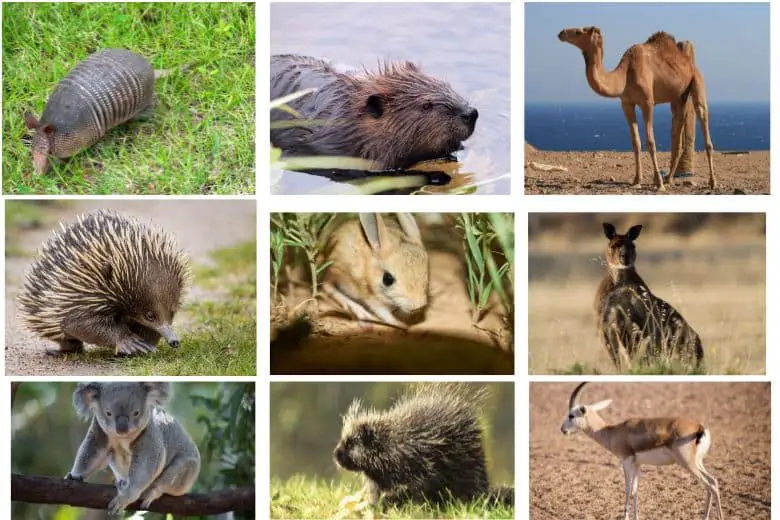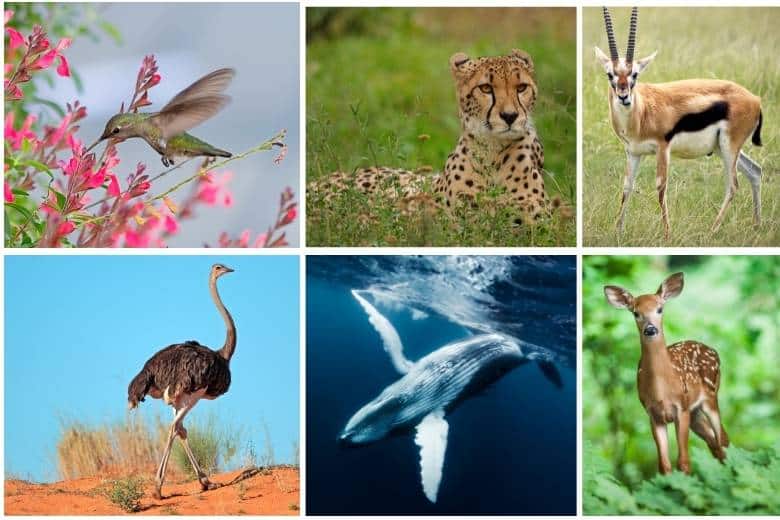Snails are a type of gastropod mollusk that is known for its distinctive spiral shells and slow movements. These creatures are found in a variety of habitats, ranging from gardens to forests to near water bodies. While many people may think of snails as just garden pest, they actually play an important role in many ecosystems and are a valuable food source for a variety of animals.
In this article, we will explore the question of what animals eat snails. We will examine the different types of animals that consume snails, the methods they use to do so, and the benefits and impacts of snail consumption for both the animals and the snail population. By the end of this article, you will have a greater understanding of the complex relationship between snails and the animals that consume them.
Animals That Eat Snails
Snails are a nutritious food source for a variety of animals, including birds, mammals, and reptiles. Let’s take a closer look at some of the animals that eat snails and their methods of consumption.
Birds
Ducks: Ducks are a common sight in wetland areas, where they feed on aquatic plants and animals, including snails. They typically use their bills to pick snails off of rocks and vegetation, or they may dive underwater to retrieve snails.
Thrushes: Thrushes are small to medium-sized songbirds that are found in a variety of habitats, including forests and gardens. They use their bills to pick snails off of leaves and other vegetation.
Gulls: Gulls are seabirds that are known for their scavenging behavior, but they also consume live prey such as snails. They typically crush snail shells with their bills before consuming the soft tissue inside.
Mammals
Hedgehogs: Hedgehogs are small, spiny mammals that are found in Europe, Asia, and Africa. They have a varied diet that includes insects, worms, and snails. Hedgehogs typically bite into snail shells to crush them and then consume the soft tissue inside.
Shrews: Shrews are small, mouse-like mammals that are found in a variety of habitats, including forests and grasslands. They have a high metabolic rate and need to consume a lot of food to survive, including snails. Shrews use their sharp teeth to bite through snail shells and consume the soft tissue inside.
Mongoose: Mongooses are small carnivorous mammals that are found in Africa and Asia. They have a varied diet that includes insects, rodents, and snails. Mongooses typically crush snail shells with their powerful jaws before consuming the soft tissue inside.
Reptiles
Snakes: Snakes are carnivorous reptiles that are found in a variety of habitats, including forests, grasslands, and deserts. Many snake species consume snails, either by swallowing them whole or by crushing their shells with their jaws.
Lizards: Lizards are a diverse group of reptiles that are found in a variety of habitats, including deserts, forests, and grasslands. Many lizard species consume snails, either by swallowing them whole or by crushing their shells with their jaws.
Turtles: Turtles are reptiles that are known for their hard shells and slow movements. Many turtle species consume snails, either by swallowing them whole or by crushing their shells with their powerful jaws.
Overall, snails are an important food source for a variety of animals, and the methods these animals use to consume them vary greatly. By consuming snails, these animals obtain important nutrients and play a role in maintaining a healthy ecosystem.
How Animals Eat Snails
Animals that consume snails have adapted a variety of methods for consuming this nutritious food source. Some animals, such as birds, use their beaks to pick snails off of vegetation, while others, such as mammals, use their teeth or jaws to crush snail shells. Let’s take a closer look at how different types of animals eat snails.
Birds
Birds that consume snails typically use their beaks to pick snails off of vegetation, rocks, or other surfaces. They may also use their beaks to crush snail shells before consuming the soft tissue inside. Some birds, such as ducks, may dive underwater to retrieve snails.
Mammals
Mammals that consume snails typically use their teeth or jaws to crush snail shells before consuming the soft tissue inside. Some mammals, such as hedgehogs, may bite into snail shells to crush them, while others, such as shrews, use their sharp teeth to bite through snail shells. Mongooses and other carnivorous mammals typically crush snail shells with their powerful jaws.
Reptiles
Reptiles that consume snails also use a variety of methods to consume them. Snakes may swallow snails whole, while lizards and turtles typically crush snail shells with their jaws before consuming the soft tissue inside.
Benefits of Snail Consumption for Animals
Consuming snails can provide a number of benefits for animals that include:
Nutritional Value
Snails are a rich source of protein, calcium, iron, and other important nutrients that are essential for maintaining good health. Animals that consume snails can benefit from these nutrients, which can help to support growth, reproduction, and overall health.
Energy Source
Snails are also a good source of energy for animals. The soft tissue inside the snail’s shell contains carbohydrates and fats that can be broken down and used as fuel by animals that consume them. This energy can be particularly important for animals during times of food scarcity or when they are engaged in activities that require high levels of energy, such as hunting or migration.
Ecological Importance
Consuming snails can also play an important ecological role by helping to regulate snail populations. Snails can be prolific breeders and can sometimes become overabundant in certain environments. By consuming snails, animals can help to keep snail populations in check, which can help to maintain a healthy ecosystem.
FAQs
Are snails a safe food source for animals?
Yes, snails are generally a safe food source for animals, as long as they are consumed in moderation and are not contaminated with toxins or pesticides. However, some species of snails can carry harmful parasites or pathogens, so it is important to be cautious when feeding snails to animals.
Can snails be harmful to animals?
Some species of snails can be harmful to animals if they are contaminated with toxins or pesticides. Additionally, some snails can carry harmful parasites or pathogens that can cause illness in animals. Therefore, it is important to ensure that snails are safe for consumption before feeding them to animals.
Do all animals eat snails?
No, not all animals eat snails. However, snails are a common food source for many different types of animals, ranging from birds and mammals to reptiles and amphibians.
Can animals become sick from eating too many snails?
Yes, animals can become sick from eating too many snails. Some species of snails contain high levels of copper, which can be toxic to animals in large amounts. Additionally, consuming too many snails can lead to an imbalance in the animal’s diet, which can cause digestive problems or other health issues.
Are there any benefits to raising snails for animal consumption?
Yes, raising snails for animal consumption can provide a sustainable and nutritious food source for animals. Additionally, snails can be raised using environmentally-friendly methods, such as using organic feeds and avoiding harmful pesticides or chemicals. However, it is important to ensure that snails are raised in a safe and sanitary environment to avoid the risk of contamination.
Conclusion
snails are an important food source for many different types of animals, ranging from birds and mammals to reptiles and amphibians. Animals have adapted a variety of methods for consuming snails, including using beaks, teeth, and jaws to extract the soft tissue inside snail shells. Consuming snails provides important nutritional value, energy, and ecological benefits, and can even drive evolutionary adaptations in animals. Therefore, it is clear that snails play an important role in maintaining healthy ecosystems and supporting the diverse array of animal life that depends on them for food.
VII. FAQs A. Can snails harm animals that eat them? B. Are there any animals that cannot digest snails? C. Are snails poisonous to animals? D. Can animals overeat snails? E. How do snails protect themselves from animals that eat them?


